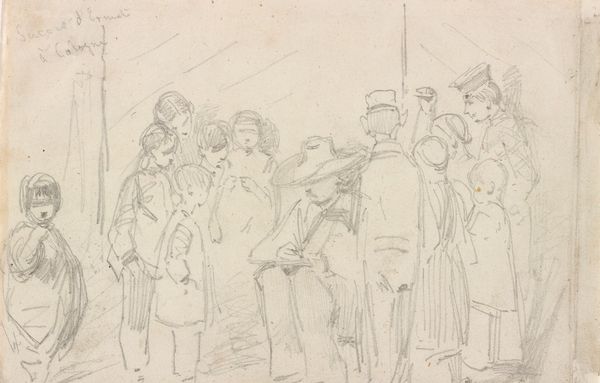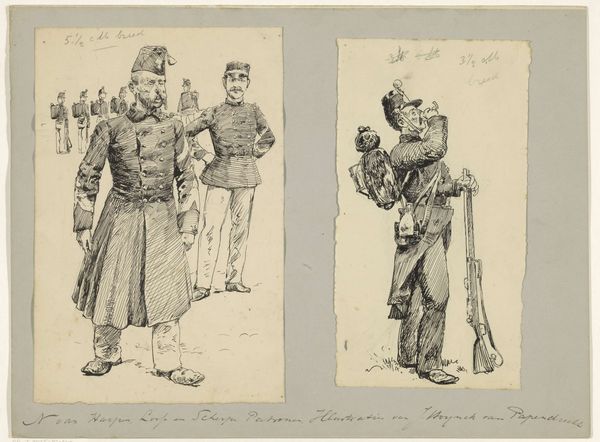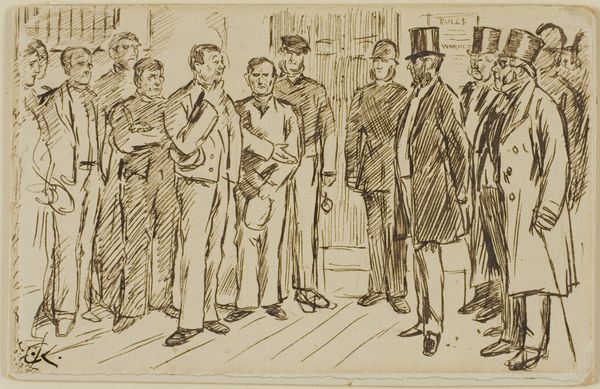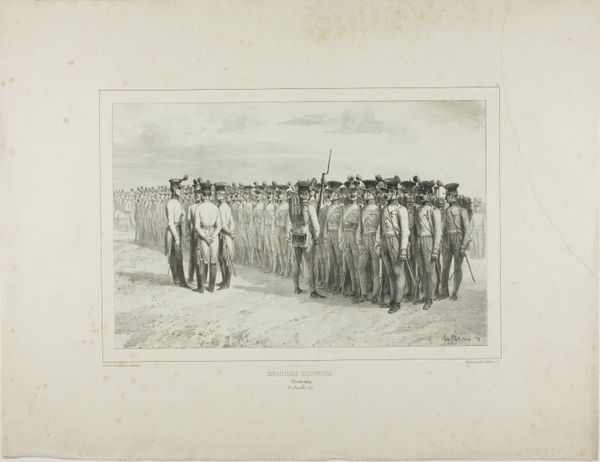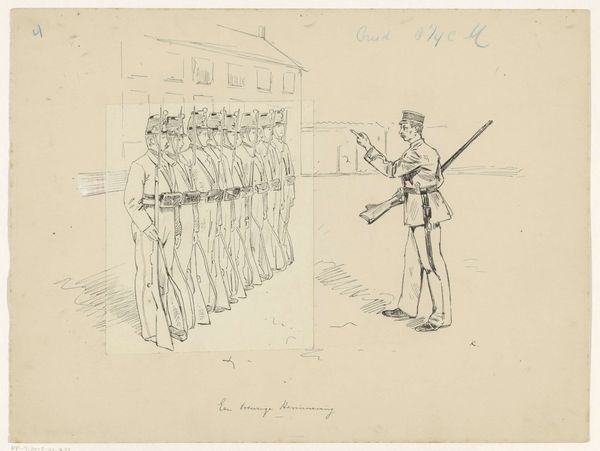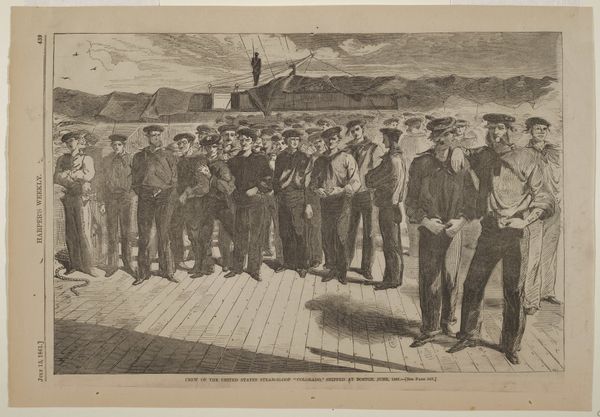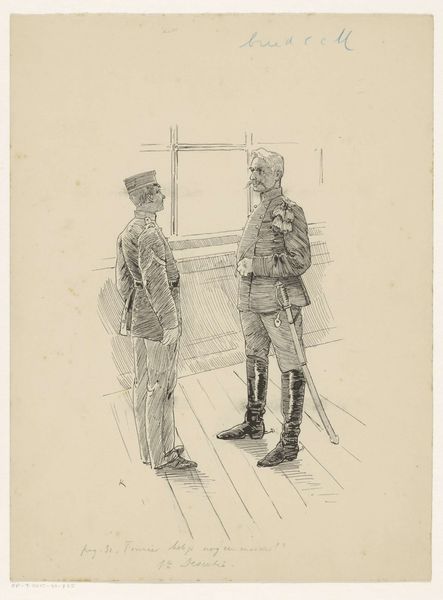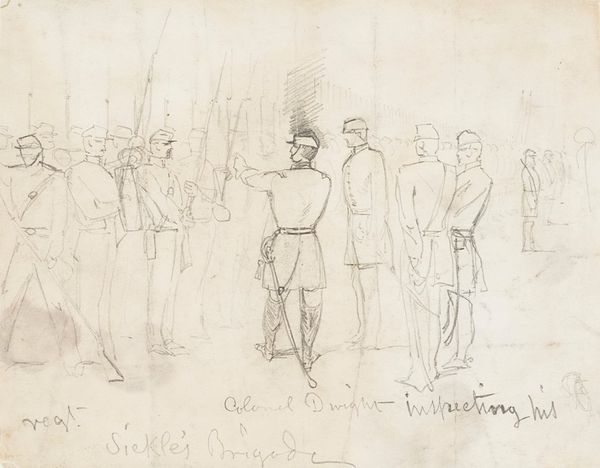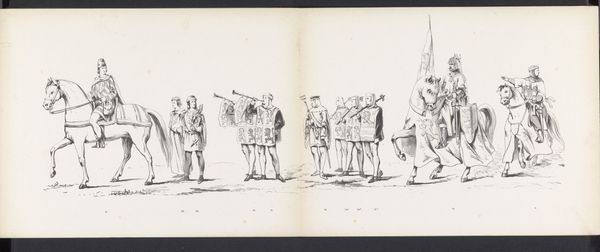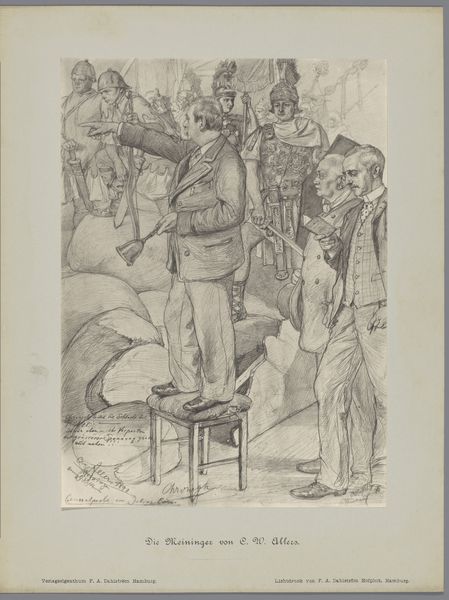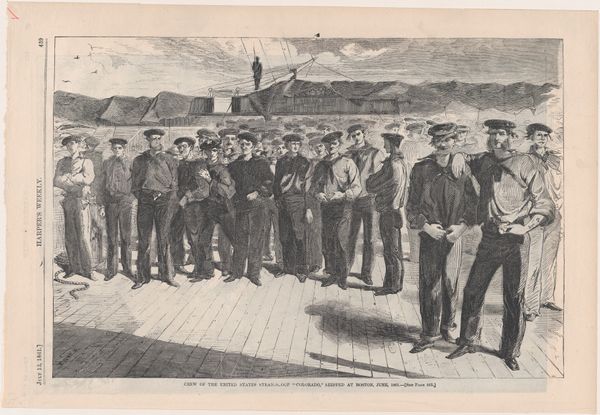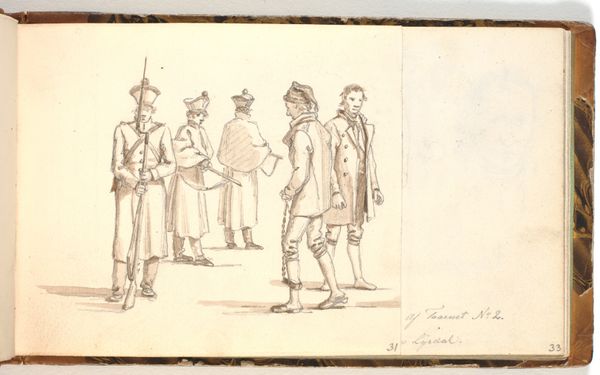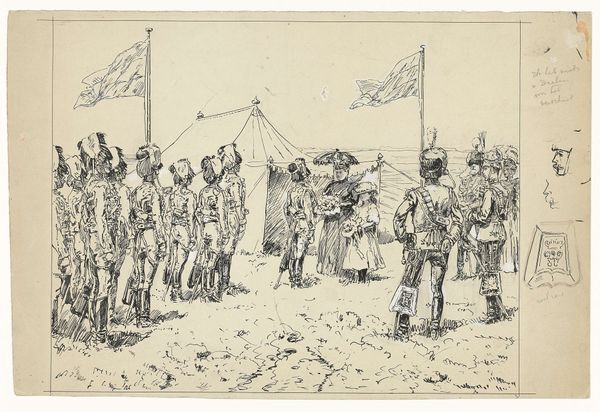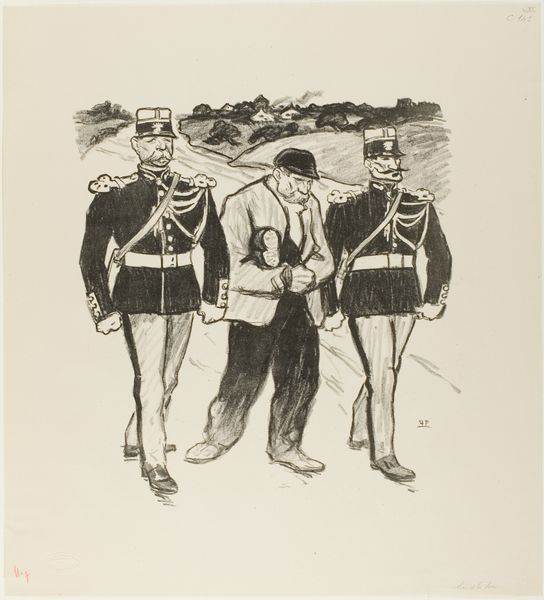
drawing, ink, pen
#
drawing
#
quirky sketch
#
pen sketch
#
personal sketchbook
#
ink
#
idea generation sketch
#
sketchwork
#
ink drawing experimentation
#
pen-ink sketch
#
sketchbook drawing
#
pen
#
genre-painting
#
storyboard and sketchbook work
#
academic-art
#
sketchbook art
Dimensions: height 272 mm, width 366 mm
Copyright: Rijks Museum: Open Domain
Editor: This pen and ink drawing, "Compagnie in een halve cirkel," which translates to "Company in a Semicircle", by Heinrich Krabbé, made before 1898, strikes me as rather formal. The group of uniformed men arranged in a semicircle, almost staged. What is your interpretation of this composition? Curator: Krabbé's piece is fascinating because it highlights the evolving role of military imagery in late 19th-century Dutch society. Genre painting like this often reflected and reinforced societal hierarchies. Consider the composition. Who is at the center, seemingly addressing the others? What does this suggest about power dynamics within this "company"? Editor: The man in the center is clearly the superior, maybe giving orders? But, is it unusual to portray soldiers this way in art at the time? Curator: Not necessarily. Military scenes were quite common, however, consider the broader socio-political context. The Netherlands, like many European countries, was experiencing rising nationalism. Art played a significant role in shaping public perception and national identity. Would you say this image glorifies war or military service? Editor: Not really. It appears mundane, more like a routine inspection than a heroic depiction. It almost feels like Krabbé’s showing the everyday realities behind the uniform. Curator: Precisely! This drawing can be viewed as part of a broader artistic trend towards realism. By showing the mundane aspects of military life, Krabbé offers a glimpse into the institution's function as a social structure and its contribution to the broader public image of the Netherlands. What does the drawing material of "pen and ink" say? Editor: Perhaps its inherent quality of swiftness is in tune with the nature of instruction and hierarchy represented? This drawing definitely makes me think more about the socio-political functions of even seemingly simple artworks. Curator: Exactly! Examining art through this lens allows us to understand not just the artist's intentions but also how social structures shape artistic creation and consumption.
Comments
No comments
Be the first to comment and join the conversation on the ultimate creative platform.
